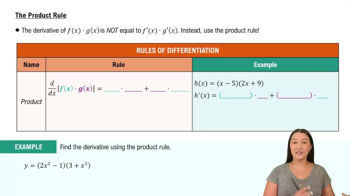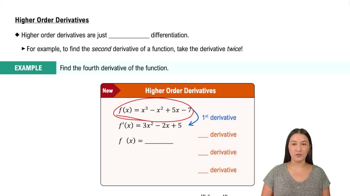Here are the essential concepts you must grasp in order to answer the question correctly.
Product Rule
The Product Rule is a fundamental principle in calculus used to differentiate products of two or more functions. It states that if you have two functions, u(x) and v(x), the derivative of their product is given by u'v + uv'. This rule is essential for finding the derivative of ƒ(x) = (x - 3)(x + 3)², as it involves multiplying two functions.
Recommended video:
Chain Rule
The Chain Rule is another critical differentiation technique that allows us to differentiate composite functions. If a function is defined as g(h(x)), the Chain Rule states that the derivative is g'(h(x)) * h'(x). This concept is particularly relevant when differentiating the squared term (x + 3)² in the function ƒ(x), as it requires applying the Chain Rule to find its derivative.
Recommended video:
Higher-Order Derivatives
Higher-order derivatives refer to the derivatives of a function taken multiple times. The first derivative, ƒ'(x), gives the rate of change of the function, while the second derivative, ƒ''(x), provides information about the curvature or concavity of the function. In this question, verifying both ƒ'(x) and ƒ''(x) is crucial for understanding the behavior of the function and confirming the correctness of the derivatives.
Recommended video:






